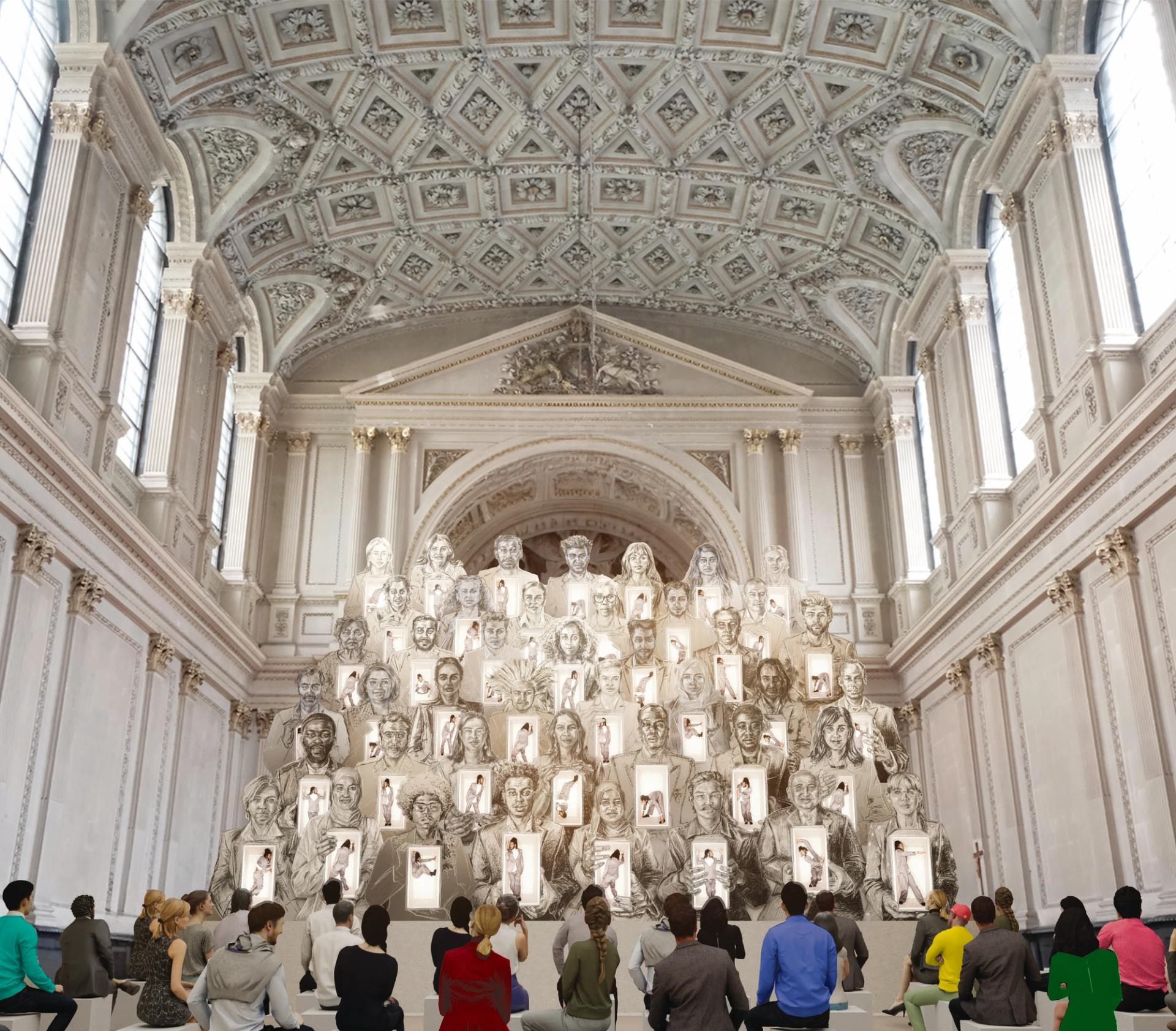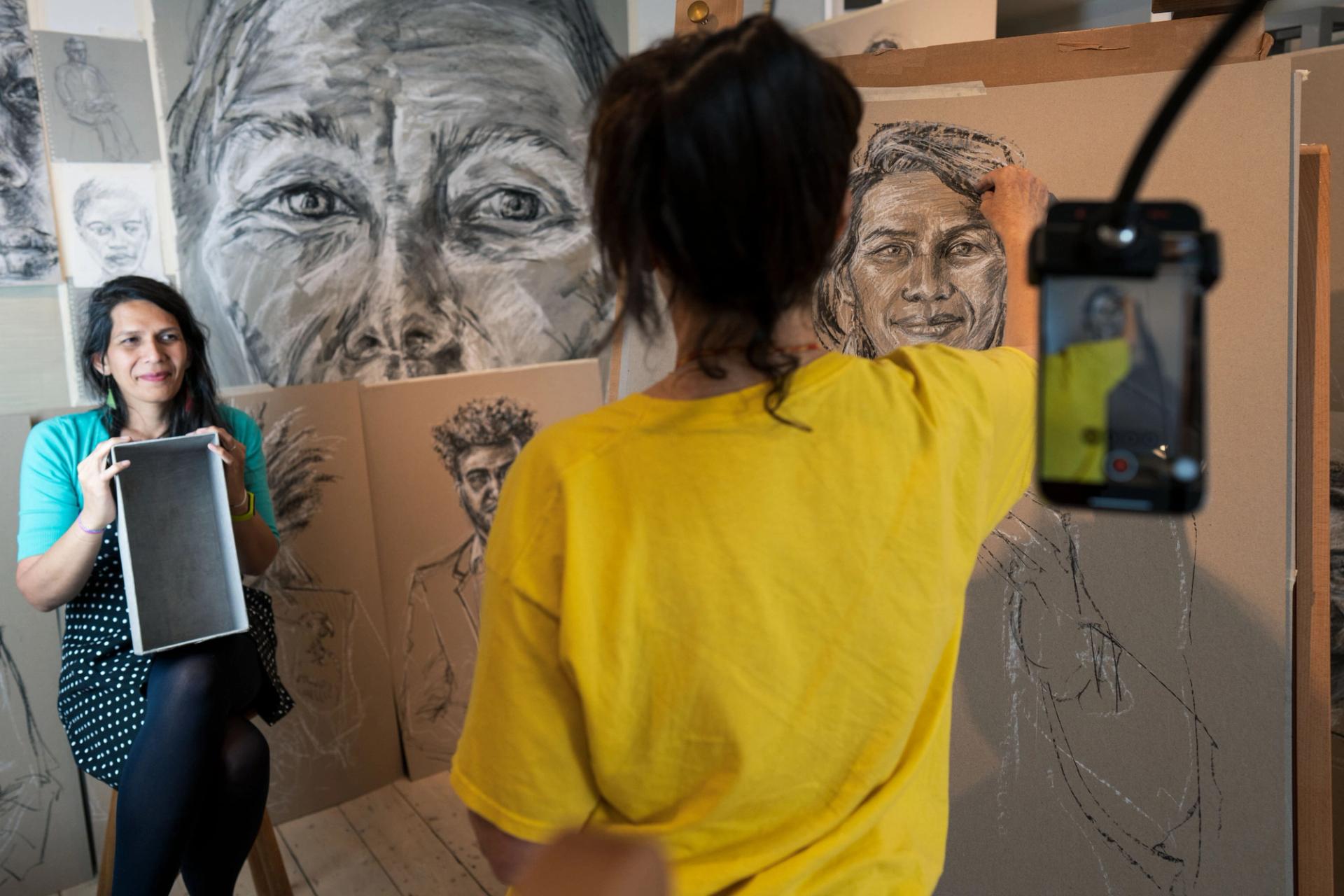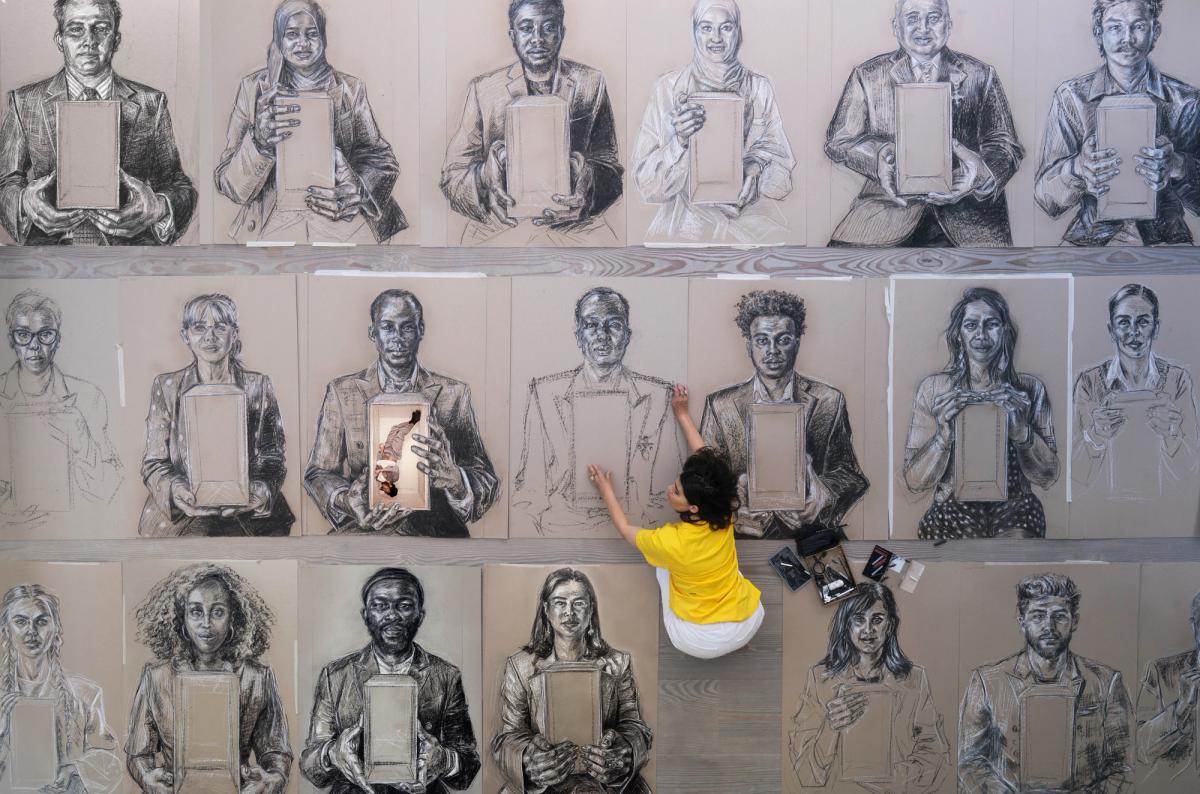The UK artist and designer Es Devlin has today unveiled an installation in a London church that will explore the plight of refugees. The work, entitled Congregation (3-9 October), is curated by Ekow Eshun, and opens against a backdrop of ongoing debates surrounding migration across the UK.
Devlin’s large-scale chalk and charcoal portraits, displayed at St Mary le Strand church on The Strand, depict 50 Londoners from 28 countries who have “experienced forced displacement from their homelands”, says a statement. The drawings are presented in rows as a “monumental projection-mapped tiered structure”.
Each portrait sitter, described as a “co-author of the work”, is shown holding a box containing a projected animated sequence. Participants include the Palestinian theatre director Amir Nizar Zuabi, the Nigerian activist Joel Nkeonye Mordi, and Stephanie Steve Shirley, who came on the Kindertransport rescue programme from Germany, aged six.

Devlin worked alongside United Nations Refugee Agency, where she made a donation following the invasion of Ukraine
Daniel Devlin
The UK's immigration discourse
Devlin says the work was originally intended to coincide with the UK general election, which was expected to take place in November. The artist believed that the election would likely provoke a “horrible toxic discourse around small boats” which, according to Home Office figures, have carried more than 25,000 people across the English Channel in 2024 to date. Since 2018, the International Organisation for Migration estimates that the journey has led to 194 deaths.
Although the general election eventually took place in July, Congregation’s message is still relevant—especially following anti-immigration protests and riots that broke out across the UK in the weeks that followed. “It was August and Joy, who was going to come and be in a portrait the day after the hostel was attacked and said she didn’t feel safe to leave her house,” the artist explains. “Really this piece is picking up from those people who came out with placards [in UK cities] and said, ‘refugees are welcome here’.”
The project reflects the UK’s wildly contrasting stances on immigration perpetuated by different politicians, and how they can vary depending on migrants’ countries of origin. “I noticed the porosity that we as a country are feeling towards Ukraine…and I thought, this is beautiful. This is the antithesis of the brittle discourse around Brexit that we've been feeling,” Devlin says.
The artist has worked alongside the migration research group at King’s College, University of London and The Courtauld Institute on the project, which was also created in partnership with the United Nations Refugee Agency (UNHCR). Devlin made a donation to UNHCR following the invasion of Ukraine, which prompted the partnership.
“They contacted me and they said, ‘we've seen you've made a donation, will you come and talk to us?’ And I just said, ‘I've got lots of questions for you. Please, can you teach me the data on refugees so I understand what is this dissonance? Why are we opening our hearts and doors and schools to Ukrainians, but not to Afghanis and Somalians and Syrians?’”.
Devlin describes the work’s participants as “rubber stamped” refugees. “Anyone who's got that information needs to be able to [properly] apply for refugee status and needs to be given a safe passage to get here,” she says. “There need to be information hubs in each of these conflict zones so that people can understand what they can apply for and what their chances are [of reaching the UK].”

"It was very calming and beautiful; people just sat quietly and engaged with the music," the artist says of the process of creating her portraits
Daniel Devlin
Establishing a connection
She discusses how she established a connection with the sitters, saying: “I know the person’s first name. That’s all I know about you [the refugee]. I don't know anything else. I know that you had to seek refuge. It might have been when you were six months old in your mother's arms on an UNHCR arranged flight. It might have been six months ago on a small boat. I don't know.”
On the process of capturing the ‘co-authors’ in the studio she adds: “I asked everybody to come wearing a suit or something for a formal occasion because I want to destabilise my ability to read the situation. The whole thing I wanted to draw was my own perspectives, assumptions and biases, and what we all bring.
“I would hear the doorbell ring, I would say hello, I might pronounce your name incorrectly because I had done no research. And then I would sit them down on a chair with a cup of tea, whatever they wanted. They'd drink. And we immediately put on Max Richter's Four Seasons [recomposed version of Vivaldi’s work].”
She continues: “It was very calming and beautiful; people just sat quietly and engaged with the music and I said, ‘I know it might feel uncomfortable but please, when I look into your eyes, will you look straight back at me because I want us to do this encounter of the gaze’.”
Congregation, St Mary le Strand church, London, 3-9 October


